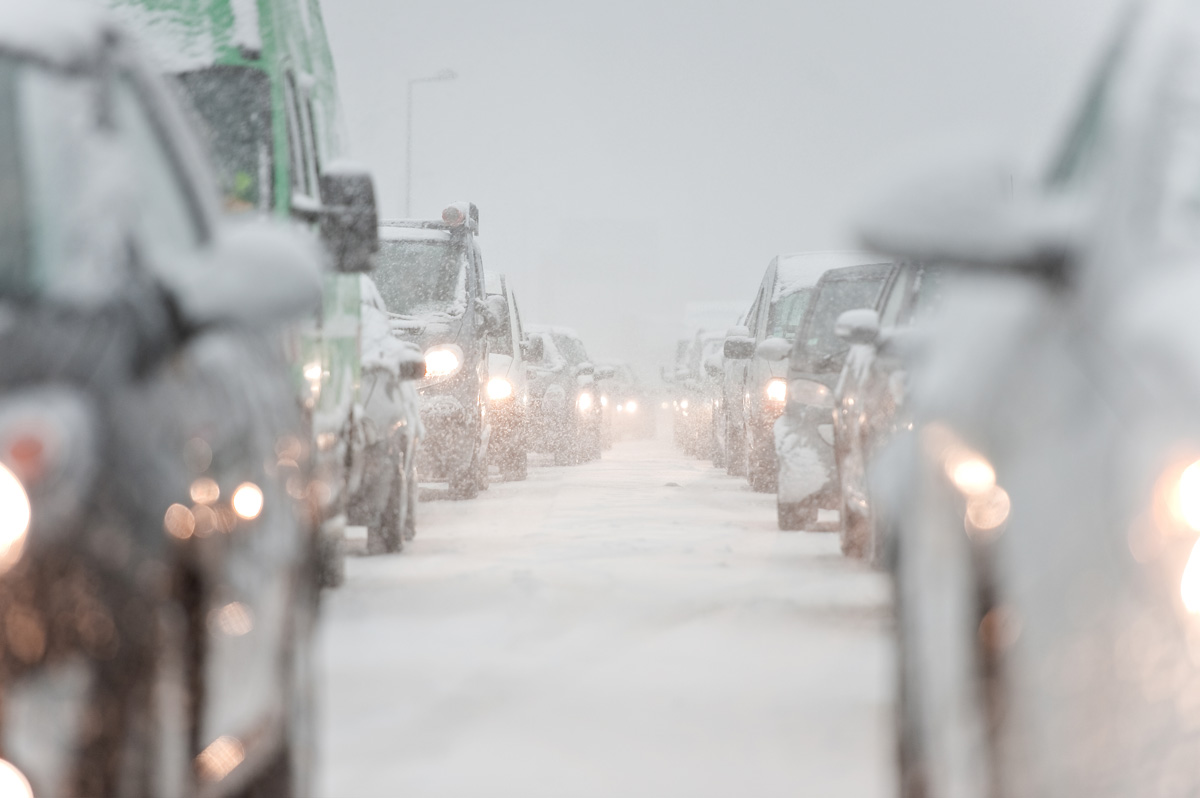The Local newsletter is your free, daily guide to life in Colorado. For locals, by locals.
You’ve probably been getting ready for winter for a while now. Your snowboard’s waxed, you’ve invested in that mountain condo rental, and your new jacket is begging to be worn. All you need now is the snow.
But what about your car?

As much as Coloradans depend on their vehicles to get them to and from the mountains (and, of course, around town) during the winter months, many drivers don’t take the time to prep their rides for our state’s unpredictable weather patterns. We spoke to the experts to find out what we should be doing to get our cars ready now for the cold weather to come.
(Read: 4 Tips for Driving in Winter Weather)
For Mechanical and Under-the-Hood Care
First and foremost, it’s time for an oil and filter change, says Richard Reina, training director with CARiD.com, an online shop for car parts and accessories. “Cold-weather driving is especially tough on engines,” he says. “Check your radiator coolant level, and make sure your oil viscosity is correct for the temperature range where you live. For example, ‘5W-30’ is a viscosity where the ‘W’ stands for ‘winter.’ The lower the viscosity numbers, the easier the oil will flow in cold temperatures. You can check for this info in your owner’s manual.”
While the above under-the-hood services can be performed at home (if you’re handy), Reina suggests having a professional test your car’s antifreeze for proper cold-weather protection, check your battery, as well as inspect your belts, hoses, and fluid levels. “This should be done routinely anyway, but winter provides more of an impetus to check the small things before they become big things,” he says.
These services are especially important for people moving from warmer states—we’re looking at you, Colorado transplants—says Brad Pellman of Boulder-based Pellman’s Automotive, a full-service auto repair facility. “Your coolant protection needs to stand up to the winter climate in Colorado, and your windshield washer solvent and engine antifreeze need to have a lower freezing point, otherwise components can freeze and cause a lot of damage,” he says.
For Exterior Care
If you don’t have a ton of money to spend, Reina suggests investing in a 100 percent solution of washer solvent—as well as putting a spare bottle in the trunk—along with a fresh set of wiper blades. “Next to traction, the ability to see out of a slush-and-salt-covered windshield is of utmost importance,” he says.
Light bulbs are also extremely important during the winter months. “Do a walk-around to see if any bulbs are out, and replace the bad ones while the weather is still reasonable,” says Reina.
And don’t forget your car’s paint, which could probably use a wax in preparation for snow. “A fresh coat of wax will protect paint again salt and slush,” says Reina.
For Interior/Personal Care
The outside of your car isn’t the only thing that needs a little extra love during the winter. “Use a dedicated set of winter floor mats, ideally ‘floor liners,’ shaped like traps, which keep snow, slush, and salt from damaging the car’s carpet,” suggests Reina. You should also keep a snowbrush, ice scraper, and first-aid kit in your car at all times. Reina suggests taking your prep a step farther and creating a “Winter Apocalypse” kit for any unforseen hours spent sitting in traffic on I-70. This kit should include things like a blanket, a flashlight and spare batteries, a portable shovel, and non-perishable snacks. Cliff Wood, CarMax executive vice president of stores, recommends adding a few other necessities in an emergency kit as well, such as jumper cables, flares or hazard triangles, cat litter (for traction on slick roadways), bottled water, and a cell phone car charger.
For Tire Care
If your budget can afford it, Reina suggests splurging for winter tires, which use a special rubber compound that provides better grip on slick streets. “Whether the engine power is going to the front, rear, or all four wheels, the fronts do the steering, and all four do the handling,” he says. “Having four winter tires optimizes your steering, handling, and braking under all conditions.”
And it’s not a bad idea to have a spare tire ready to go in case of an emergency, as well as all the necessary tire-changing equipment in the vehicle, says Wood.
Chains and studs have also come a long way. “Today’s chains are much easier to install, and modern studs do less damage to the roads,” Reina says. “Just be sure to check local ordinances regarding their use.” Pellman agrees, just make sure to test them out before the first big storm. “There is also a newer sock product you can put on tires, but know how to install and use these products before the winter weather sets in.”
While it’s true that getting your car winter-ready will require some time, energy, and cash, starting now is the best way to ensure your car is road-ready once the snow really starts to fall, and could save you from a full-on breakdown somewhere down the road.








